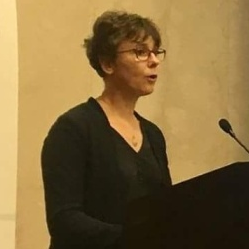Remote Sensing of Land Surface and Earth System Modelling
A special issue of Remote Sensing (ISSN 2072-4292). This special issue belongs to the section "Biogeosciences Remote Sensing".
Deadline for manuscript submissions: closed (31 May 2021) | Viewed by 30564
Special Issue Editors
Interests: land surface data assimilation; coupled assimilation; Earth system modelling; land surface observations; forward modelling
Special Issues, Collections and Topics in MDPI journals
Interests: land surface modelling; climate change; hydrology; data analysis
Special Issues, Collections and Topics in MDPI journals
Interests: land surface modeling; hydrology; data assimilation; remote sensing; optimization
Special Issues, Collections and Topics in MDPI journals
Special Issue Information
Dear Colleagues,
Land surface observations are increasingly used to constrain climate models, weather prediction systems and hydrological forecast and flood alert systems. Current satellites provide relevant information on hydrology (e.g., soil moisture, snow depth and cover, terrestrial water storage, inland water extent and temperature), vegetation (e.g., LAI, NDVI, FAPAR, biomass) and energy (e.g., LST, albedo).
This Special Issue aims at documenting most recent progress in using land surface remote sensing observations (soil moisture, vegetation, snow extent and water equivalent, lakes and land surface temperature, land surface albedo, flooded areas) for Earth system modelling applications, including weather forecasts, climate modelling and hydrological forecasts. We welcome studies related to land surface data assimilation, land surface re-analysis, as well as land surface forward modelling (VIS/IR/MW), inverse modelling and machine learning. The Special Issue also encourages studies that investigate land surface parameter retrieval, coupled assimilation in land-hydrology-atmosphere systems as well as intercomparison studies.
Dr. Patricia De Rosnay
Dr. Sujay Kumar
Dr. Clement Albergel
Guest Editors
Manuscript Submission Information
Manuscripts should be submitted online at www.mdpi.com by registering and logging in to this website. Once you are registered, click here to go to the submission form. Manuscripts can be submitted until the deadline. All submissions that pass pre-check are peer-reviewed. Accepted papers will be published continuously in the journal (as soon as accepted) and will be listed together on the special issue website. Research articles, review articles as well as short communications are invited. For planned papers, a title and short abstract (about 100 words) can be sent to the Editorial Office for announcement on this website.
Submitted manuscripts should not have been published previously, nor be under consideration for publication elsewhere (except conference proceedings papers). All manuscripts are thoroughly refereed through a single-blind peer-review process. A guide for authors and other relevant information for submission of manuscripts is available on the Instructions for Authors page. Remote Sensing is an international peer-reviewed open access semimonthly journal published by MDPI.
Please visit the Instructions for Authors page before submitting a manuscript. The Article Processing Charge (APC) for publication in this open access journal is 2700 CHF (Swiss Francs). Submitted papers should be well formatted and use good English. Authors may use MDPI's English editing service prior to publication or during author revisions.
Keywords
- Land surface observations
- Land surface data assimilation Land surface monitoring
- Coupled land–atmosphere data assimilation
- Retrieval of surface parameters
- Land surface forward modelling







